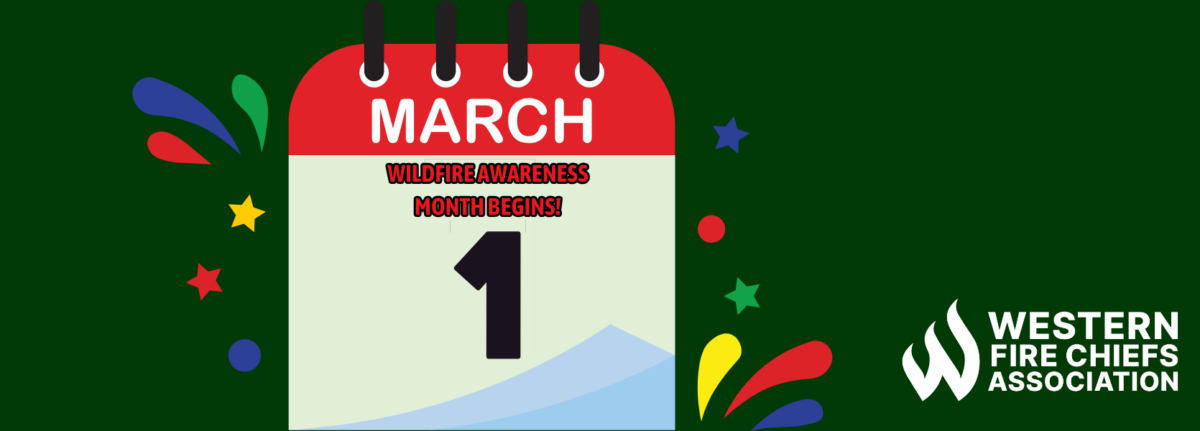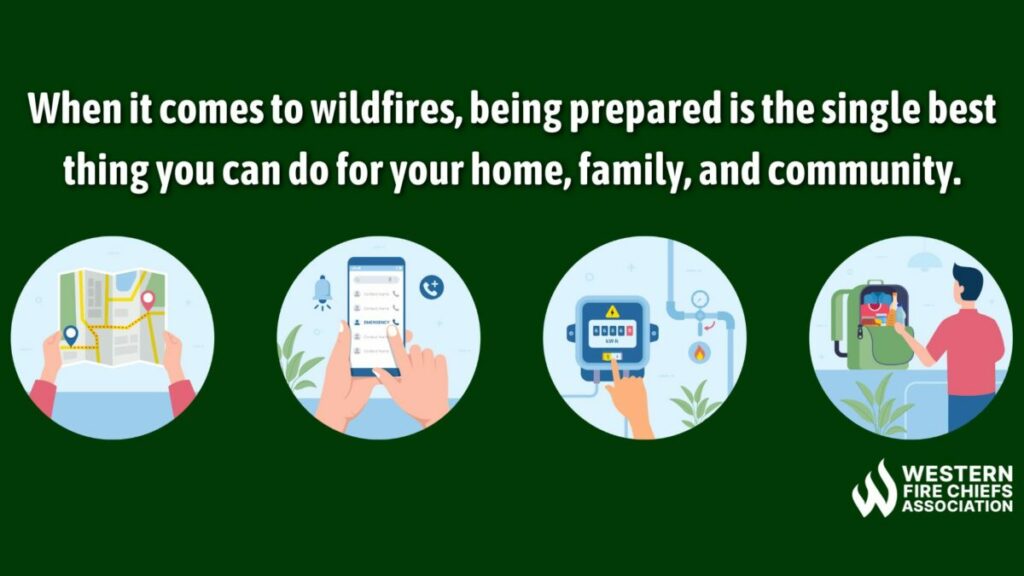Fire Pit Safety Tips
Stay safe around the campfire with tips from the Western Fire Chiefs Association. Learn essential precautions and practices for a worry-free outdoor campfire.
Discover essential strategies for wildfire preparedness during Wildfire Awareness Month. Get insights and tips to safeguard your community with guidance from the WFCA.
Published:March 19, 2024
Edited:April 14, 2024

Discover essential strategies for wildfire preparedness during Wildfire Awareness Month. Get insights and tips to safeguard your community with guidance from the WFCA.
As the weather warms for spring and the cleanup from winter takes place, the looming threat of the upcoming wildfire season becomes increasingly apparent. Spring is a great time to engage in fire prevention efforts such as participating in hazardous fuels reduction, having an emergency plan in place, and prioritizing fire safety.
May is designated as National Wildfire Awareness Month because it is the time of year when the weather becomes warmer and wildland vegetation, also known as fuels, begin to dry out. This signals the need to begin planning for wildfires. Dedicating a month to wildfire awareness aims to promote prevention and preparedness efforts among communities that live within areas prone to wildfires.
When it comes to wildfires, being prepared is the single best thing you can do for your home, family, and community. To mitigate the devastating impact of wildland fires on homes, proactive measures can be taken to enhance defensibility. Roughly 80% of homes lost to such fires could have been spared had appropriate precautions been implemented. From creating defensible space to having an emergency evacuation plan, here are some critical tips for wildfire preparedness:

Removing flammable materials and brush around residences is crucial; eliminating pine needles, dry leaves, and other combustible debris can also significantly decrease the risk of ignition. Additionally, relocating woodpiles and small propane tanks a minimum of 30 feet away from homes, including neighboring properties, is highly recommended. Embers pose a significant threat, capable of infiltrating unprotected areas such as porches and vents. Installing wire mesh screens with small openings, no larger than 1/8th inch, is another way to bolster a structure’s defenses against wildland fires.3
Time is crucial when dealing with wildfires. In some cases, homeowners may only have a few minutes to grab personal belongings before they need to evacuate. To ensure preparedness, begin by consolidating important documents and storing them securely either electronically on a USB drive, in a password-protected e-folder, or within a fireproof safe. Review your home insurance policy to confirm it adequately covers your current home value and includes provisions for wildfires. Additionally, develop an emergency evacuation plan tailored to your home and assemble a go-kit containing essential supplies.1
Sign up to receive emergency alerts and notices for your community and familiarize yourself with the burning rules and regulations specific to your area.
The Western Fire Chiefs Association has articles available to better prepare you for wildfires. Here are some resources to help you:
Stay safe around the campfire with tips from the Western Fire Chiefs Association. Learn essential precautions and practices for a worry-free outdoor campfire.
Discover essential firework safety tips to ensure a dazzling display without accidents. Learn how to celebrate responsibly with expert guidance from WFCA.
Explore the role of AI in wildfire prediction with guidance from the WFCA. Learn how advanced algorithms and data analytics enhance early detection and response.